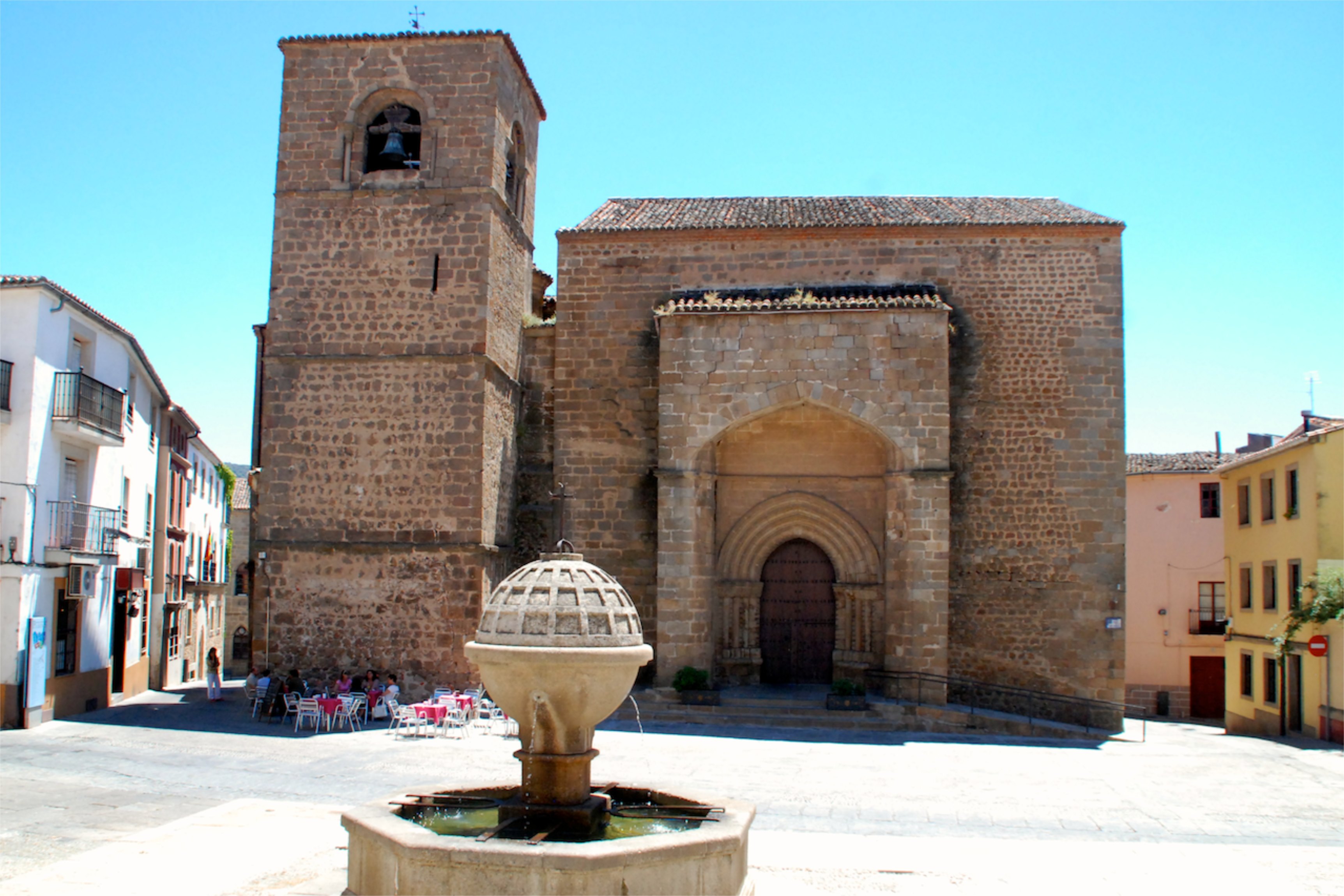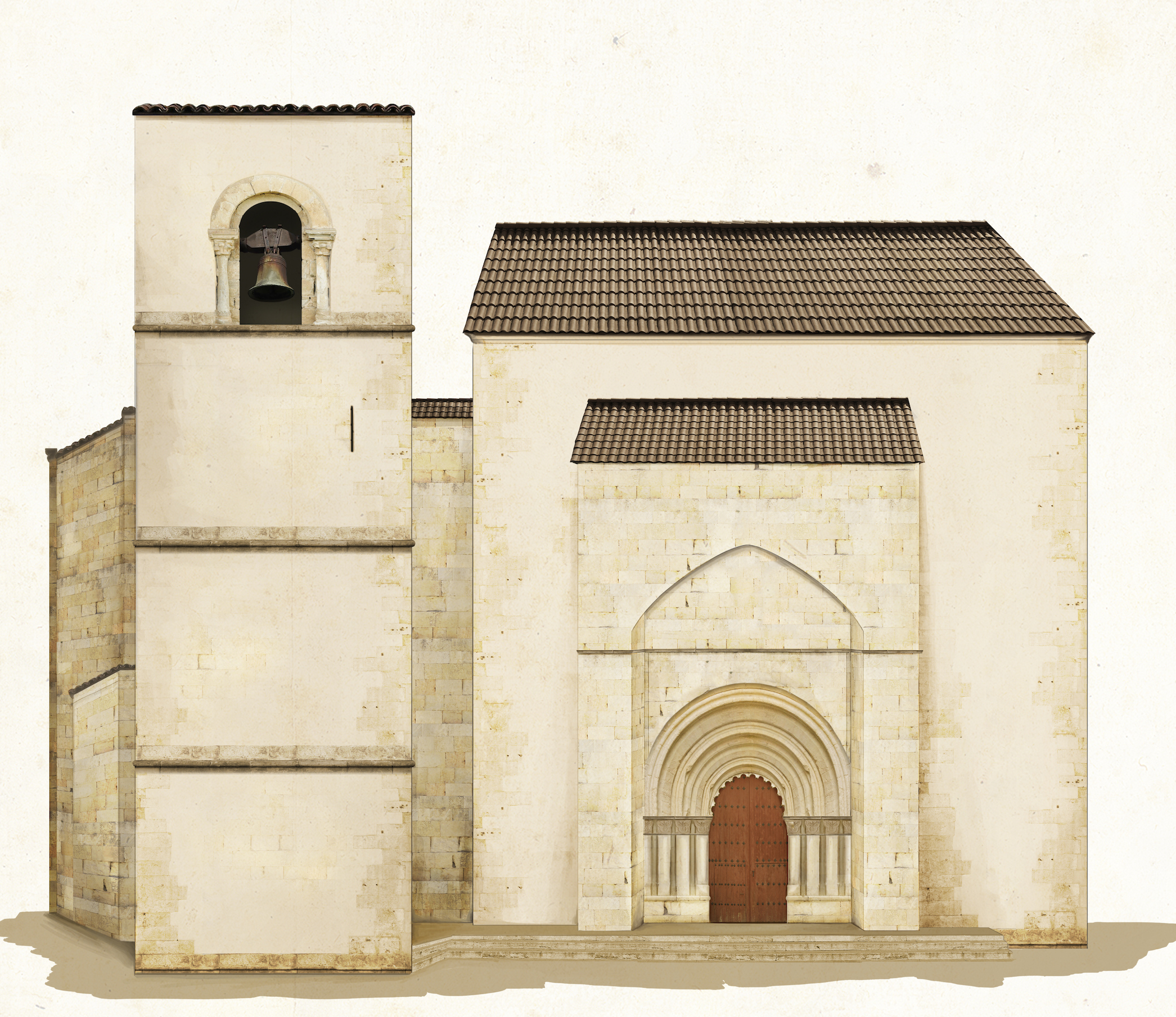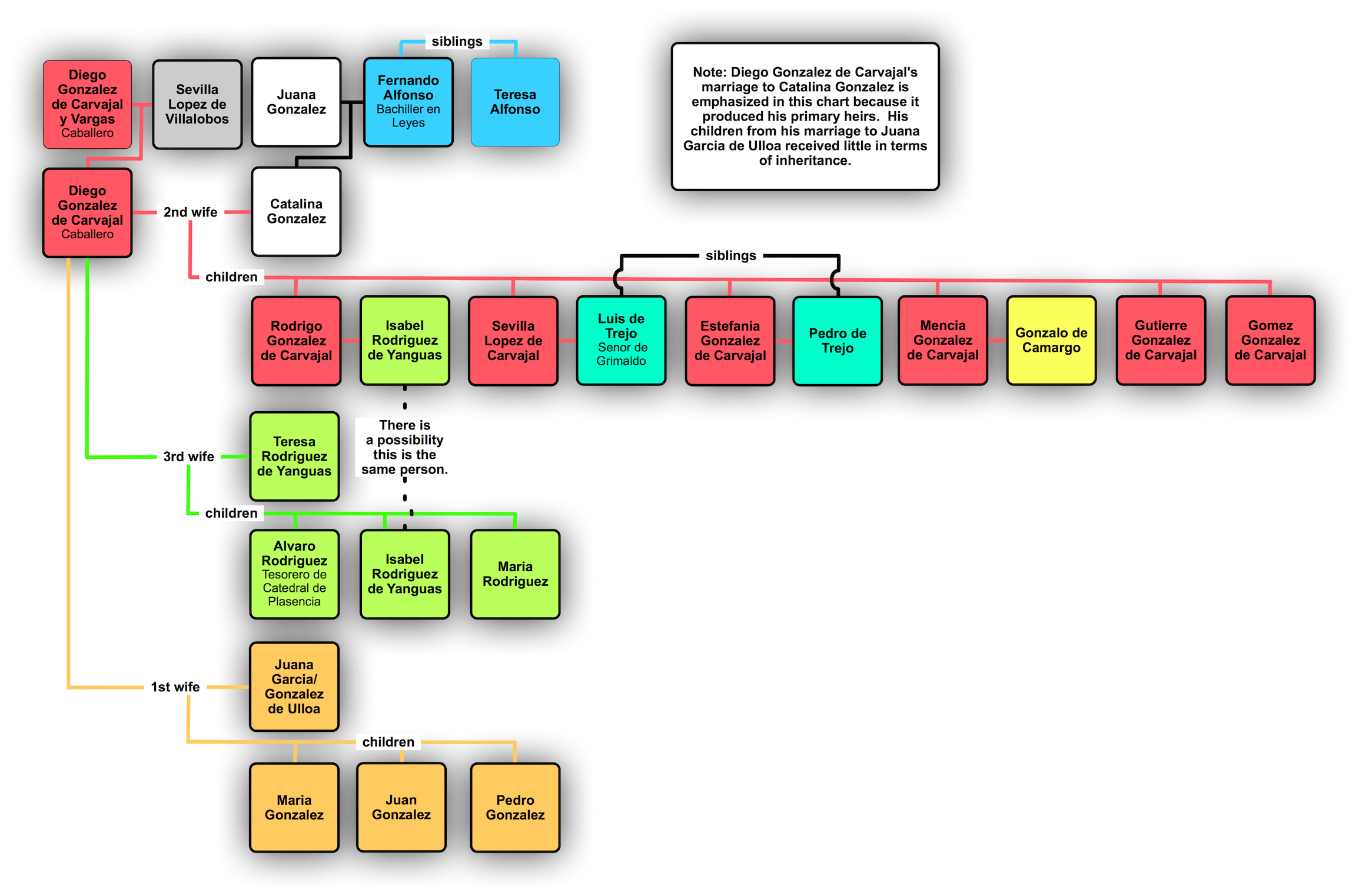Laying A Knight to Rest: Caballero Diego Gonzalez de Carvajal, circa 1455
by Dr. Roger Louis Martinez-Davila
[/lab_heading]
In his testament taken on the 12th of July 1455, in front of the public notary Alonso Lopez de Ciudad Rodrigo, Diego Gonzalez de Carvajal, the fourth by this name, made his wishes known.[1] But he continued to modify his will three more times during the same year, on July 14th, August 22nd, September 18th, and September 19th.[2] (In this narrative, his first will is explored.) Like his predecessors, Diego spoke of his Catholic faith, and expressed another common 15th century lament, the inescapability of death. He dictated:
To all let it be known that with this letter of testament, taken from me, Diego Gonzalez de Carvajal, resident of the city of Plasencia, and being of good memory and understanding…for my soul…and fervently believing in the sanctity of the true Father, Son, and Holy Spirit and the Holy Catholic faith, and I understanding that death is a natural thing that no creature or no person has the power to escape from, I establish and order this my testament and of my free will and in the manner that is presented.[3]
Ensuring the preservation of his religious piety, family honor, and his body, Diego made specific provisions for his burial and for his memory. In a well-established tradition for this Carvajal family network, Diego Gonzalez wished to be buried close not to a deceased spouse, but alongside his mother, and made ample provisions for the poor. On these issues Diego mandated:
First,…that my body be interred in the Iglesia de San Nicolas, in the said city, next to the Altar of Holy Mary in the Sepulcher where the body of my mother, Sevilla Lopez, is buried. On the day that I am buried that you say for me the Vigil and that you also say for me in the said church, ten masses as is customary, and on the day of my burial that ten of the poor be well fed with bread, wine, meat, and fish and the following day the of my burial that bread and wine be provided to their table for a year.[4]
While most wills specified the feeding of the poor on the day of interment of the deceased, Diego Gonzalez wanted a bountiful table for Plasencia’s poor. The table he set with meat and fish was unusual, as was the yearlong bread and wine donation. Additionally, his burial with his mother in the Iglesia de San Nicolas, built on the foundation of an old Roman temple and known to be established by 1326, maintained and extended a family funerary tradition. Diego’s eldest son, Rodrigo Gonzalez de Carvajal, also willed that he be buried the Iglesia de San Nicolas.[5] The family’s interment practices culminated with the building of the ornate Chapel (Capilla) of Don Pedro de Carvajal y Giron from 1604 to 1621.[6],[7][/lab_scroll_box]

Photo 1: The Church of St. Nicholas (Iglesia de San Nicolás) (Burial site of Diego Gonzales de Carvajal)

Drawing 1: Virtual Plasencia’s reproduction of the Church of St. Nicholas (Iglesia de San Nicolás). Original artistry prepared by David Seidman.

Figure 1: Immediate Family of Diego Gonzalez de Carvajal
And I will to the Trinidad y Cruzada y Sancta Olalla de Barcelona, to each religious order, …and for the works of the cathedral, twenty maravedis to each. And to the other churches and hermitages in the said city and their suburbs within one league…one maravedi for lamp oil. I ask that the church of San Nicolas and its clergy say a Trinitarian[8] for me and in the Monastery of San Francisco that that say a Trinitarian for the souls of my lady, Juana Gonzalez, wife of the Bachiller Fernando Alonso, and [mother of] Catalina Gonzalez, my first wife, that for the customary masses that are said I give that which is the same salary paid to the clergy of the Iglesia de Santiago del Arrabal of the said city, where I am a resident, the amount of 200 maravedis. For doing so in the manner that I have asked I give two stables, a residence[9] in Serradilla…, and an additional 300 maravedis pension[10] from my third of an inherited property from Julian Perez, which is a rented property of mine, and the earnings from one-quarter of a half ownership of a flock of sheep of the rents produced forever.[11]
Rodrigo de Carvajal, Diego’s eldest son, benefited the greatest from his last will and testament. On the day of his death he instructed through his testament that Rodrigo would inherit and take possession of a sizeable proportion of his assets and his noble titles. This transfer of most resources to his oldest son was not unusual, but the extent to which Diego Gonzalez anticipated and planned for contestation of his will was highly unusual. Most Carvajal family testaments utilized basic language to warn that no party should interfere with the testator’s wishes after their death—Diego’s approach to the issue was extreme, his will included multiple insulations from the meddling by outside parties. Authoritatively he put forward:
I will that on that the day that I die that Rodrigo, my son, take possession and tenancy and lordship[16] of the said inherited properties as I will and yield and direct, and that no Pope, nor Cardinal, nor Archbishop, nor Bishop, nor Provisor, nor Visiting Prelate, nor Judge, nor any Vicar, nor other ecclesiastical or secular Justice, nor any of my heirs can demand me or demand Rodrigo, my son, make claim against any of these inherited properties nor any of their fruits or their rents…and if he should die and he have legitimate heirs, then his eldest son shall take ownership of the said property.[17]
[/lab_scroll_box]
When it came to distributing the resources that each of his spouses brought to each of his marriages, Diego tried to will those items back to the appropriate surviving spouse or children of that spouse. In the case of Teresa, this meant returning to her a modest amount of silver that she had given to Diego when they were first married. In the following passage from his will, Diego Gonzalez speaks to this gift and his wishes regarding her care after his death. He mandated:
And because the said Teresa Rodriguez, my wife, brought and gave to me a small amount of silver that I had made into a rounded embellishment and guard [32] with the figure of a pine tree for my sword, I will that it be for the said Teresa…because it was made with her silver. …and at the time Teresa Rodriguez married me, she brought and gave to me some bed clothing and jewelry and household items, that I can value in fair estimation five thousand maravedis…that I will that she be given goods of mine that are worth five thousand maravedis, which should make her content. And I ask that Teresa Rodriguez…who is in the same houses that I am living, that she be allowed to live there until a year and a half after my death…and that no person can remove her from the house during this time…and she is to be given nine bolts of the finest black Flemish wool that can be had and this is the most important to understand of all the things that I have willed. And during this marriage of myself and Teresa…we purchased a house that we called El Palacio in Seradilla, with a little bit of land that was adjacent to the house and it had half a quarter of a stable connected to the houses of Juan de Alfonso de Arevalo, of which my half of this property I give to her so that she owns it free and clear forever and to pass on to her heirs.[33]
Thankfully for Teresa Rodriguez de Yanguas’s gift a rare glimpse at the detail, the pine tree embellishment and guard (taza), on Diego’s sword is revealed. Diego closes his original will by naming his third wife, Teresa Rodriguez, and his eldest son, Rodrigo Gonzalez de Carvajal, executors of his will.[38] As executors they were charged with disposing of enough of his land holdings and other assets so that all heirs can be paid, and the remaining assets would remain the property of Rodrigo.[/lab_scroll_box]
Bibliographic Sources
[1] Archivo de la Catedral de Plasencia (ACP) Legajo 14, Doc. 25.
[2] ACP Legajo 14, Doc. 25, Folio 3.
[3] ACP Legajo 14, Doc. 25, Folio 3-3v.
[4] ACP Legajo 14, Doc. 25, Folio 3v.
[5]ACP Legajo 14, Doc. 14, Folio 2.
[6] Cordero Alvardo, Pedro. Plasencia: Heráldica, Histórica y Monumental. Plasencia: Graficas Sandoval, 1997. pp. 99, 103.
[7] Don Pedro Carvajal y Giron was the direct descendant of Diego Gonzalez de Carvajal, also known as Diego Gonzalez, the fourth. Don Pedro’s father was Diego Gonzalez de Carvajal, the fifth.
[8] Treintanario cerrado: Número de 30 días, continuados o interrumpidos, dedicados a un mismo objeto, ordinariamente religioso.
[9] Spanish term is “Cuarto”/
[10] Forro: Canon o pensión que se paga en virtud de este contrato.
[11] ACP Legajo 14, Doc. 25, Folio 3v-4.
[12]ACP Legajo 99, Doc. sin numero. Titled, “Derecho a la Capellania que fundo Gonzalo Lorenzo Espadero marido de Elvira Ruyz e Valverde, servidera en Santa Maria de Caceres, dotada cada un ano en 7000 r. en Yervas.”
[13]ACP Legajo 99, Doc. sin numero. Regarding Don Gaspar Suarez de Carvajal, Prueba, 1628.
[14]ACP Legao 14, Doc. 38, Folio 2v.
[15]ACP Legao 14, Doc. 38, Folio 2.
[16] Spanish term is “Señorio”
[17] ACP Legajo 14, Doc. 25, Folio 4.
[18] The scribe’s marginalia alongside this sentence indicates that Maria was a “hija bastarda,” or an illegitimate daughter.
[19] ACP Legajo 14, Doc. 25, Folio 4v.
[20]One last possible clue about the identity of Juana Gonzalez la Sevilliana or Juana Gonzalez de Ulloa is nestled, of all places, in Catalina Gonzalez last testament of 1431. Twenty-four years before Diego prepared his testament, his wife Catalina Gonzalez provided a gift of three hundred maravedis to her loyal handmaiden and servant, Juana de Sevilla. However, it seems highly unlikely that Catalina would take one of Diego’s mistresses as her servant, much less leave her an inheritance. See ACP Legajo, Doc. 38, Folio 2.
[21] The scribe’s marginalia alongside this sentence indicates that Juan and Pedro were “hijos bastardos”
[22] ACP Legajo 14, Doc. 25, Folio 4v-5.
[23] ACP Legajo 14, Doc. 25, Folio 5.
[24] ACP Extractos del Inventario de los papeles del archivo, Tomo 1, Folio 11v-12.
[25]Estefania’s husband, Pedro de Trejo, is named in Diego’s testament as well as in a manuscript detailing a conflict between the Carvajal-Trejo family and Alvaro de Zuniga, the Duke of Plasencia. See ACP Legajo 1, Doc. 44, Folio 1.
[26]ACP Legajo 14, Doc. 25, Folio 6-7.
[27]ACP Legajo 133, N. 17.
[28] ACP Legajo 14, Doc. 25, Folio 6v.
[29] ACP Legajo 14, Doc. 25, Folio 6v.
[30] ACP Legajo 14, Doc. 25, Folio 9.
[31] ACP Legajo 14, Doc. 25, Folio 8.
[32] Taza: Pieza de metal, redonda y cóncava, que forma parte de la guarnición de algunas espadas.
[33] ACP Legajo 14, Doc. 25, Folio 8-8v.
[34]In ACP Legajo 5, Doc. 37, during the 1460s, Alvaro Rodriguez is reported as the Treasurer in the Cathedral of Plasencia.
[35] See ACP Legajo 14, Doc. 42 for Isabel’s full name, Isabel Rodriguez de Yanguas.
[36] ACP Legajo 14, Doc. 25, Folio 9-9v.
[37]ACP Legajo 14, Doc. 38, Folio 2.
[38] ACP Legajo 14, Doc. 25, Folio 9v.[/lab_scroll_box]